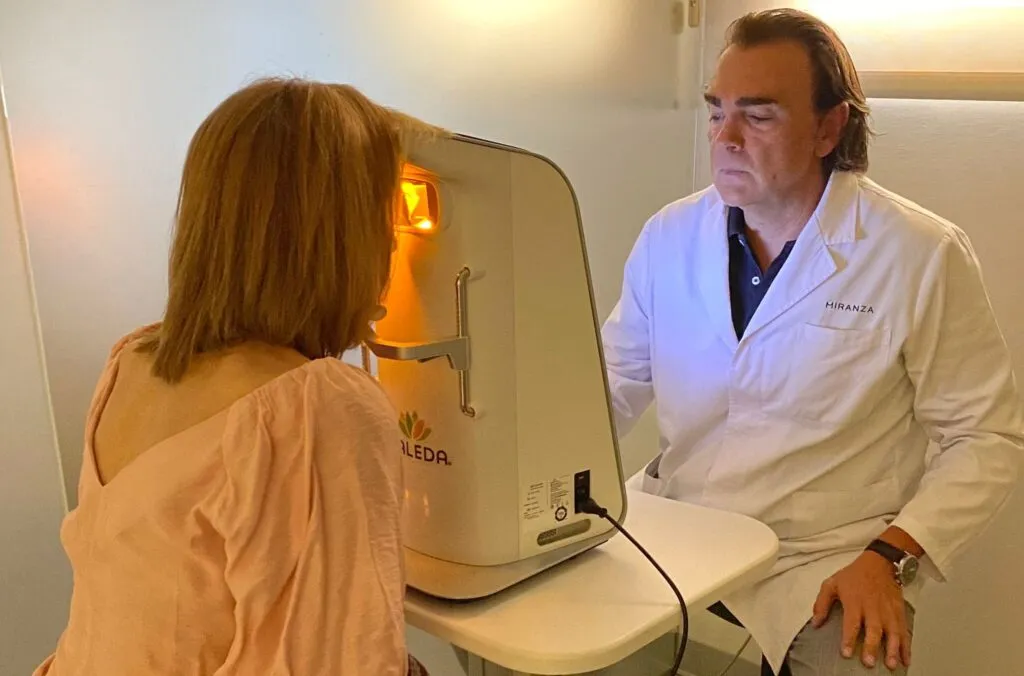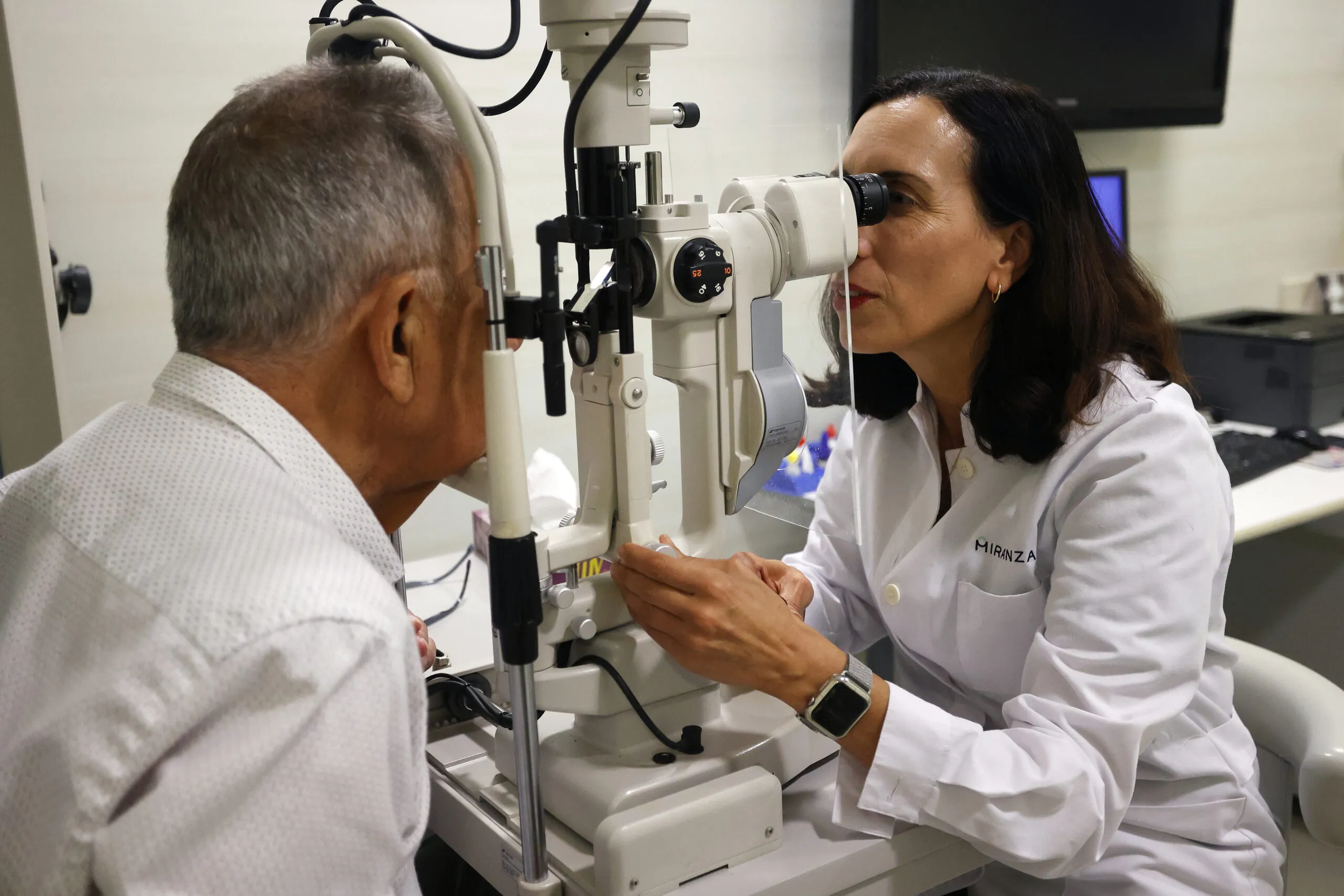
A new LED light treatment halts vision loss from dry AMD for the first time
Miranza is pioneering the use of photobiomodulation, a low-energy light therapy that promotes retinal cell regeneration and is currently the only available option to slow the progression of dry AMD.
Our clinics are pioneering a new LED light-based technique called photobiomodulation, which is currently the only therapeutic option to slow the progression of dry AMD—and in some cases, even improve functional vision in patients who previously had no available treatment.
Photobiomodulation is a non-surgical, non-invasive technique that shows promising results in patients with early to intermediate stages of the disease. Also known as low-level light therapy, it involves the controlled application of LED light to the retina to stimulate cellular function in ocular tissues and promote their regeneration. As a result, the progression of the disease is slowed, and in certain patients, visual quality may even improve.
More than 800,000 people in Spain suffer from Age-related Macular Degeneration (AMD), a condition that is the leading cause of irreversible vision loss in people over the age of 55. Around 80% of these cases correspond to the “dry” form of the disease, which is characterized by a slow but continuous progression that leads to gradual and significant vision loss, severely impacting quality of life.
Until recently, there was no effective treatment to slow its progression. However, we now have a therapeutic option available: photobiomodulation—an innovative treatment that is already being applied.

An innovative, safe, and non-surgical option
Dr. Marisa Ramón, a specialist in retina and vitreous, explains that “this is an outpatient treatment, recommended when the disease is not very advanced, which does not require pupil dilation, surgical intervention, or the administration of intraocular injections.”
To date, photobiomodulation is the only therapy for dry AMD approved in the European Union. In addition to its effectiveness, photobiomodulation stands out for its safety. As a non-invasive treatment, it significantly reduces the risk of complications and does not require extensive aftercare. “It uses low-intensity light, which makes the procedure comfortable, safe, and free of significant side effects,” adds Dr. Ramón.
The treatment consists of nine sessions of about 10 minutes each, spread over the course of three weeks. After completing the first cycle, the patient is evaluated to assess the results. The treatment is then repeated every four months, at least during the first year, according to Dr. Pedro Amat, also an ophthalmologist specializing in retina and vitreous.
Why is it important to treat dry AMD?
Dry AMD is a degenerative disease that affects the macula, the central part of the retina, causing loss of central and detailed vision. As it progresses, it can make everyday activities such as reading, writing, using the phone, or even recognizing faces difficult, compromising the patient’s independence and quality of life.
“The deterioration may seem slow, but if it is not detected in time, the visual damage is irreversible,” warns Dr. Amat. This highlights the importance of early diagnosis. “Detecting it in the early stages allows intervention before vision loss becomes severe and significantly improves the patient’s visual prognosis,” he adds.
Currently, it is estimated that around 600,000 people live with dry AMD in Spain, but a significant increase is expected in the coming years, driven by rising life expectancy and an aging population.
In this regard, photobiomodulation offers the only therapeutic opportunity to slow the progression of the disease and, in some cases, even improve functional vision in people who previously had no treatment options for this condition.